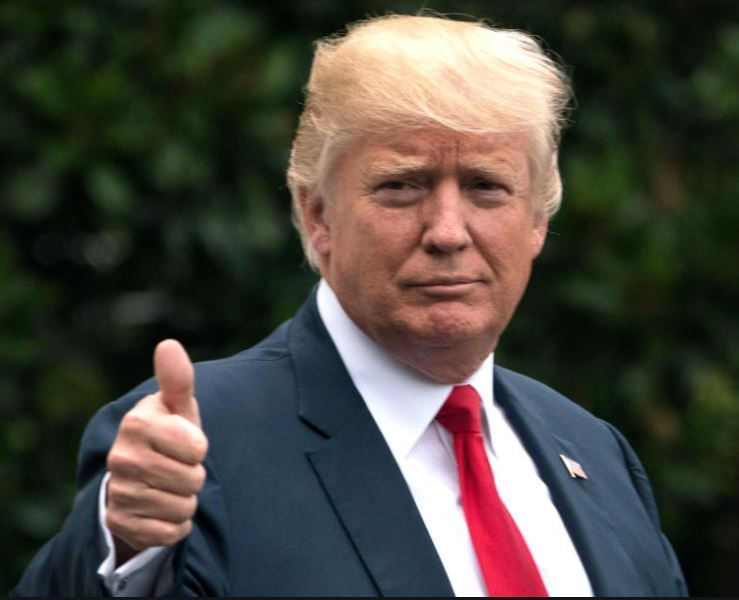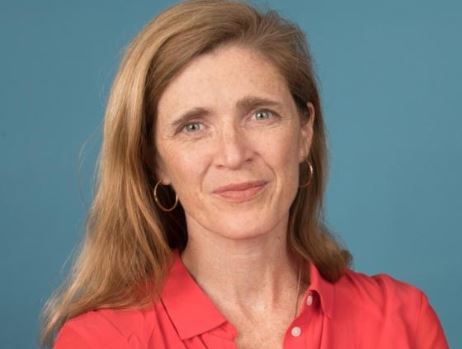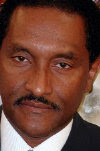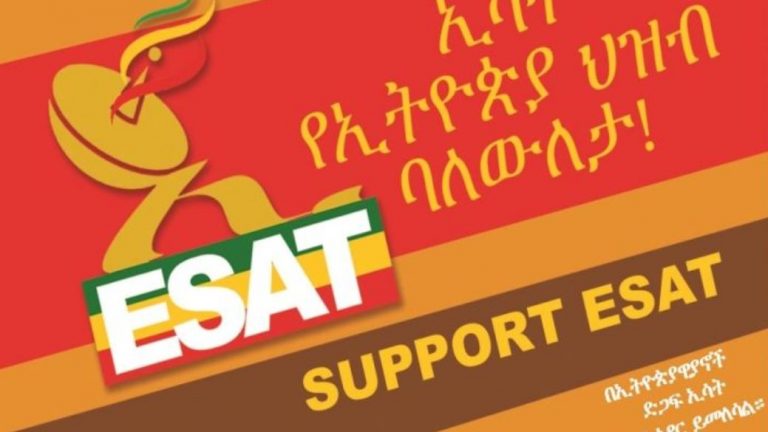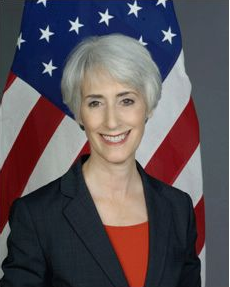Quo Vadis Ethiopia: Where Are You (not) Going?
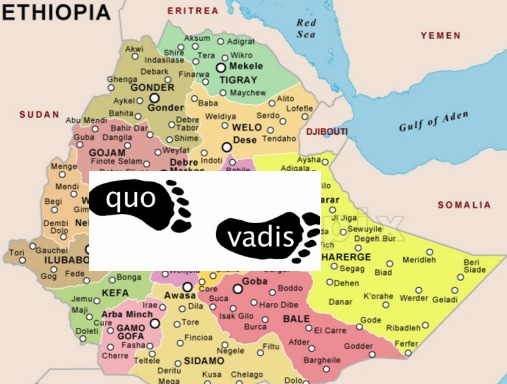 (Excerpted English version of speech given at the “Conference on the Future of Ethiopia: Transition, Democracy, and National Unity” organized by Vision Ethiopia on March 27, 2016 at the Marriott Georgetown.)
(Excerpted English version of speech given at the “Conference on the Future of Ethiopia: Transition, Democracy, and National Unity” organized by Vision Ethiopia on March 27, 2016 at the Marriott Georgetown.)
…
I want to thank Vision Ethiopia and the organizers of the “Conference on the Future of Ethiopia: Transition, Democracy, and National Unity”.
When Prof. Getachew Begashaw called me months ago to invite me to attend and participate at this conference, I was impressed by the idea of a forum for broad engagement, dialogue and debate on issues facing Ethiopia. I hope others will follow the vision of Vision Ethiopia and organize more forums.
I would like to express my appreciation and gratitude to Prof. Getachew and all of the organizers in Vision Ethiopia for their wonderful efforts in putting together this conference. Thank you all for caring so much about Ethiopia and the people of Ethiopia in organizing this conference. Change cannot come without caring.
I also want to thank Ethiopian Satellite Television for covering this conference. It was in May 2010, six years ago that ESAT literally burst on the Ethiopian scene from space to provide alternative news, information, analysis and entertainment to Ethiopians wilting under T-TPLF propaganda.
I served as the first chairperson of the ESAT advisory committee. It was wonderful working with Ethiopians from diverse professional backgrounds.
I know the forces of the Dark Side who draw their power from fear, anger, hatred, revenge and aggression continue their efforts to block ESAT transmissions, but ESAT with its light saber relentlessly continues to slash through the curtain of darkness hanging over the people of Ethiopia.
The best weapon of dictators is secrecy.
The best weapon against dictators is free media.
The best battle plan against dictators is to be armed to the teeth with the truth and use the media to shine the blinding light of accountability on oppressors clinging nakedly to power.
Thank you ESAT for shining your blinding light on visionless oppressors. Thank you ESAT for all you have done to inform and enlighten the people of Ethiopia.
I want to thank all of the presenters at this conference for their thoughtful and provocative presentations. I have learned much from their insights and diversity of views and opinions.
I thank all of you who attended this conference this weekend. Thank you for your penetrating questions and insightful comments. Your participation has vastly improved the quality of this conference.
As many of you are aware, I got into the human rights struggle in Ethiopia after the late Meles Zenawi ordered the massacre of unarmed protesters following the 2005 election. We all know that 193 men, women and children were shot down in the streets and over 30 thousand persons imprisoned throughout the country following that election. There are 237 policemen who committed those atrocities who are walking the streets free today.
That massacre continues today. The mass arrests and persecutions continue today.
In the past few weeks, over 270 Ethiopians have been massacred in Oromia region by the Thugtatorship of the Tigrean Peoples Liberation Front (T-TPLF).
Thousands have been jailed in T-TPLF secret and official jails. No one but the T-TPLF knows the real figures about how many they have killed and jailed. They are not talking. They are just killin’ and jailin’.
The absence of massive outrage and visible support for the struggle in Oromia against the T-TPLF is itself an outrage and a moral abomination. When Ethiopians in Oromia bleed, when they are jailed and disappear, why do we remain silent? Why?
Before I offer my remarks, I ask you all to join me in remembering the 193 men, women and children killed in the Meles Massacres in 2005, the thousands of others the T-TPLF has massacred but whose deaths were not recorded by any inquiry commissions since or before that election, the 270 documented victims of T-TPLF wanton violence recently and the thousands of political prisoners languishing in T-TPLF prisons today.
I want to take a moment to remember our Ethiopian heroes unjustly imprisoned by the T-TPLF. There are so many of them. It is impossible to list them all.
We remember Eskinder Nega, Andualem Aragie, Bekele Gerba, Ahmed Jebel, Abebe Qesto, Emawayesh Alemu, Woubshet Taye, Temesgen Desalegn and so many others.
“Quo vadis, Ethiopia?”
I have come across three time zones to answer this question with questions, more accurately to interrogate the question itself.
What does the question “Where is Ethiopia going?” even mean?
I am sure for many people it is a straightforward question for which there is a straightforward answer. For me it is a mind-bogglingly complex question for which there could be an infinite set of answers.
The modern usage of the phrase “quo vadis” originates from a question allegedly asked of Saint Peter the Apostle as he fled likely crucifixion by Emperor Nero Augustus Caesar in Rome. It is said that Peter met the risen Jesus on the outskirts of Rome where Peter asked Jesus “Quo vadis?”. Jesus allegedly replied, “Romam eo iterum crucifigi” (“I am going to Rome to be crucified again”).
Inspired by the response, Peter is said to have returned to Rome to continue his work eventually crucified upside-down.
Happy Easter to all who celebrate that holiday today.
I first came across that Latin phrase when I was in high school in Addis Ababa in the late 1960s.
Well over four decades ago, I published an article, an op-ed of sorts, in a popular English monthly(?) magazine in Addis Ababa (circa 1968-69), the name of which I cannot remember, with same Latin phrase questioning, if my memory serves me right, what I believed to be the unconventional life styles of some of my youthful contemporaries. I was a geek of sorts then and was questioning where the youth were going.
Almost one-half half century later, I am asking the same question. “Quo vadis, Ethiopia?” Where are you going Ethiopia? I should like to add, “or not going?”.
Life can be strange and funny sometimes.
It is strangely funny to me to ask the same question I asked of my contemporaries so long ago of the young people today.
Over 70 percent of the population of Ethiopia is said to be under 35.
So the first question about the question is, “Should the question be reframed more precisely as “Quo vadis, Ethiopia’s youth?”
I am not trying to sideline my Hippo Generation, just stating the hard facts.
As I ask the youth where they are going, I am compelled to share with Ethiopia’s Cheetah Generation a cautionary but wise African saying about going places: “If you don’t know where you are going, any road will take you there.”
So it is important for Ethiopia’s youth to have a road map to navigate to their chosen destination(s).
Others say, “All roads lead to (from) Rome.”
The Roman Empire was large and political power radiated out of Rome to the rest of its imperial possessions.
(Just in passing I will mention that “Il Duce” Benito Mussolini found a road to Ethiopia in 1935 to begin the “new Roman empire” and sent his troops over to declare, “I came, I saw, I conquered.” His predecessors tried the same thing in 1896.
Twice Rome found out from the Ethiopians, “You came, you saw and here is a boot to your rear end to help you get back to Rome pronto.)
But the question to Ethiopia’s youth is, “Do all roads lead to (from) Ethiopia?
The question, “Quo vadis Ethiopia?” has its corollary, “Where are you going T-TPLF?”
The T-TPLF master builders of the empire of corruption have the same attitude about Ethiopia as did Mussolini. They came out of the bush and declared, “We came. We saw. We conquered.”
Ethiopians should deliver the same message to the T-TPLF. “You came. You massacred. You stole. Here is a boot to get you back to the bush in a hurry.”
Follow the youth
To find out where Ethiopia is going, I say follow the youth.
So the question, rephrased again is this, “Are Ethiopia’s youth looking to find Ethiopia?”
Albert Einstein once observed that “If I had an hour to solve a problem I’d spend 55 minutes thinking about the problem and 5 minutes thinking about solutions.”
Einstein also said, “Imagination is more important than knowledge. For knowledge is limited to all we now know and understand, while imagination embraces the entire world, and all there ever will be to know and understand.”
Phrased more poetically, George Bernard Shaw said, “You see things; and you say, ‘Why?’ But I dream things that never were; and I say, ‘Why not?’” That is the kind of imagination I am talking about.
I have been given 20 minutes to solve all of Ethiopia’s problems, so I have decided to use 17 minutes to think about the problems out loud with you.
I will use the remaining 3 minutes to think about the solutions.
I shall try to weave together four themes — the African proverb, the twin Einsteinian notions of thinking critically and thinking imaginatively and creatively and the notion that all roads lead to Rome.
The organizing question for the conference is, “Ethiopia, where are you going?”
It is an important question because it is on the minds of every Ethiopian.
I have wrestled with the question for quite a while.
In April 2011, I wrote a commentary entitled, “The Bridge on the Road(map) to Democracy”.
In June 2012, I wrote a commentary entitled, “Ethiopia: On the Road to Constitutional Democracy”.
In January 2011, I wrote a commentary weekly column entitled, “After the Fall of African Dictatorships”.
I have written many other commentaries on the question, the latest one this past December entitled, “The ‘End of the Story’ for the T-TPLF in Ethiopia?”.
Why it is on the minds of all Ethiopians is open to question. There are a thousand different reasons to ask that one question.
Is the question raised because we could see the twilight of the T-TPLF?
Could it be because things are changing so fast in Ethiopia that some see an enveloping darkness of deepening repression over the horizon and others blinding light of liberation from T-TPLF rule at the end of the tunnel?
To me the five words in the question resonate differently.
I hear those words asking me, not one but endless questions:
Ethiopia, where are you going with the T-TPLF? (Ethiopia is at a dead end with the T-TPLF.)
Ethiopia, where are you going after the T-TPLF is gone?
Ethiopia, who will take over after the T-TPLF is over?
Ethiopia, are you going to be an undiscovered country after the T-TPLF is gone?
Ethiopia, are you going backwards into tyranny and authoritarianism as you have over the past one hundred years?
Ethiopia, will you walk over the minefields the T-TPLF has set for you over the past 25 years and implode?
Ethiopia, are you heading towards civil war?
Ethiopia, are you finally getting back on the long walk to freedom in the same sense as Nelson Mandela?
Ethiopia, are you walking in the direction of truth and reconciliation?
Ethiopia, are you ready to walk out of the kilil walls built around you and into a land free of the shackles of ethnic politics, sectarianism and thug rule?
No one I know wants to answer or begin to answer these questions.
I certainly don’t want to answer them.
These are very difficult questions. They are scary questions. They are complex questions. They are mind-boggling questions. They are questions that seem intractable and insurmountable. They are questions that trigger depression in the most optimistic and good-willed Ethiopian.
Answering these questions demands extraordinary creativity; extraordinary imagination and extraordinary commitment and sacrifice.
I know how the T-TPLF’s answers these questions.
The T-TPLF will tell you that without their guidance and leadership Ethiopia will go the way of the way of Syria and Libya. (That’s their fervent wish. If they can’t have Ethiopia for their playground, let it be destroyed. Apre moi, le deluge. (After me (us), the flood.) Or as the Ethiopian saying goes, “The donkey said after she is dead she does not care if grass ever grows.)
The late T-TPLF mastermind Meles Zenawi was fond of saying that without his guiding hand Ethiopia will go the way of Yugoslavia. The former Yugoslavia is today seven nations. That was Meles’ dream for Ethiopia. That is the T-TLF’s dream today. After they go, Ethiopia will go 7 or 9 separate ways.
Meles is gone and Ethiopia is still here. Ethiopia will be here forever!
After the T-TPLF is gone, Ethiopia will continue to be here forever!
It is the privilege of self-proclaimed messiahs that the road will end with them and without them.
There is no question that the Ethiopia-stan made of killils and kililistans will end with the end of the T-TPLF.
Didn’t apartheid end (at least officially) with the end of white minority rule in South Africa?
Ethnic federalism (ethnic apartheid) is the womb and amniotic fluid in which the T-TPLF was gestated and born.
Kililistans were birthed to maintain the T-TPLF in power. Just as there could be no white minority rule and bantustans in South Africa without apartheid, there could also be no T-TPLF rule without ethnic federalism and killilistans.
But I have chosen to re-frame the question “quo vadis”.
The question is, “Where is Ethiopia going after the T-TPLF is gone?”
To me that question is similar to asking a person afflicted by cancer what he would do if s/he is suddenly free of cancer.
Supposing a person who is unjustly imprisoned for decades is suddenly set free, how would that person feel?
Supposing a population held in bondage for decades were set free, how would they feel?
I think we can answer these questions with other questions.
How did the majority of South Africans feel when the minority white apartheid regime collapsed and was replaced by majority rule in 1994?
How did the majority of South Africans feel when Nelson Mandela and thousands of anti-apartheid leaders and political prisoners were released in 1991?
How did the majority of South Africans feel when they stood up for hours to cast their ballots for the first time in their lives and managed to elect the government of their own in an election that was not rigged, in a free and fair election, an election that was not won by 100 percent by the minority white apartheid regime?
The 600 pound gorilla or the 6,000 pound elephant in the room is where Ethiopia is going after the T-TPLF is gone, swept into the dustbin of history?
Where is Ethiopia going after the mud walls of T-TPLF dictatorship come tumbling down and the T-TPLF glass palaces of illusion behind the mud walls are shattered by a tsunami of popular uprising or creeping resistance?
Will Ethiopia go the way of Humpty Dumpty who “had a great fall” and could not be put back together by “all the king’s horses and all the king’s men”?
Or will Ethiopia rise from the ashes of the T-TPLF and be all it can be?
I have prophesied that the T-TPLF is on its last legs living on borrowed time. T-TPLF prime minster Hailemariam (I did not say puppet minister) recently said the T-TPLF can no longer expect to cling to the backs of the people. Those days are over, according to Hailemariam. My response was, “Do something. Get the T-TPLF monkey off the backs of the Ethiopian people!”)
The question, “Where is Ethiopia going?” cannot be answered without asking the corollary question, “Where is the T-TPLF going?”.
The T-TPLF is going to the dustbin of history!
The T-TPLF is a dead end street for Ethiopia.
So here are two questions that need to be addressed: 1) What happens in the run up to the time when the T-TPLF is swept into the dustbin of history? 2) What happens between the time the T-TPLF is swept in to the dustbin of history and history is made to replace the T-TPLF?
The Solution- A road map for the long road to freedom?
I will come back to the African proverb. “If you don’t know where you are going, any road will take you there.”
The road map is a new Ethiopian constitution that will gide Ethiopians to reach the New Ethiopia.
I have studied the T-TPLF constitution. It is a patchwork of borrowed language from other constitutions just like the T-TPLF’s so-called anti-terrorism law is a cut-and-paste of terrorism laws from different countries.
From what I have been able to gather from the T-TPLF constitution, there is no such entity as “Ethiopia”, only “peoples, nations and nationalities” in the land mass known as Ethiopia.
Perhaps I should correct myself because the landmass known as “Ethiopia” is itself in question today after you subtract the land given in “arbitration” in the northern border to an invading army and a 700-plus kilometer slice of land secretly handed over to the Sudan.
In the Preamble to the T-TPLF constitution is written, “We, the nations, nationalities and Peoples of Ethiopia…”
There is no nation as “Ethiopia” per se constitutionally, only nations, nationalities and peoples.
Just to clarify what I mean, let me ask you to consider the Preamble to the Constitution of the United States which states: “We the People of the United States…”
There is one people of the United States (“We the People…”) even though the United States is a nation of immigrants who came from all nations, nationalities and peoples of the world.
“We the people…” is the principal reason why the U.S. has survived and prospered, despite major imperfections for well over two centuries. (I did not say abominations like Donald Trumpenstein.)
I believe the Preamble to the Constitution of the New Ethiopia should begin with the following phrase, “We the People of Ethiopia, in order to…”
Second, the constitution of the New Ethiopia should have language along the following lines: “The powers not delegated to the national Ethiopian government by the Constitution, nor prohibited by it to the states, are reserved to the states respectively, or to the people.” In other words, the new national government of the New Ethiopia will function only to the extent that the national constitution grants power to it. You may have seen similar language in the tenth amendment to longest enduring constitution in the world.
Third and straight up, the new constitution of the New Ethiopia should adopt in its entirety Article 55(4) of Ghana’s Constitution: “Every political party shall have a national character, and membership shall not be based on ethnic, religious, regional or other sectional divisions.”
If these three constitutional objectives could be achieved, what remains is getting on Nelson Mandela’s long road to freedom.
Imagine a freedom ride on Nelson Mandela’s Way.
What is Mandela’s way? It is the way of freedom from the mental prison and slavery of racial and ethnic hatred and sectarianism.
Mandela said, “As I walked out the door toward the gate that would lead to my freedom, I knew if I didn’t leave my bitterness and hatred behind, I’d still be in prison.”
I believe a new constitutional road map to the New Ethiopia will lead all Ethiopians out of the mental prisons of long-simmering ethnic hatred and geographic cages called “kilils” into the promised land of truth and reconciliation.
Mandela’s way of truth and reconciliation.
Many countries have undergone a truth and reconciliation process including Rwanda, Argentina, Sierra Leone, Sri Lanka, Kenya, Ghana and Chile.
There are different approaches to truth and reconciliation. The basic idea is to help a country heal its political and social wounds by uncovering the truth about human rights violations that had occurred during a particular period. The basic idea is you cannot build a new nation on a foundation of revenge and the Hammurabic Code of “an eye for an eye.” That could only lead to a nation of blind people.
Ethiopia is the global poster child for human rights violations so a truth and reconciliation process is vital for a post-T-TPLF Ethiopia.
I believe a successful truth and reconciliation process will pave the road to genuine multiparty democracy.
I am talking about a multiparty democracy based on the rule of law, respect for human rights, governance accountability and transparency.
I do NOT mean a multiparty democracy based on ethnicity, religion, language, region and so on.
Good governance depends upon the ability of individuals and groups to express their opinions and compete in the political process. A strong multi-party political system enables citizens to organize around issues and advance ideas, policies and programs for governance. A strong multiparty system ensures people who share similar views and opinions to organize and pressure government. Competitive multiparty systems provide political space for the expression of civic discontent and engagement into constructive policy debates for peaceful change. A multiparty political system facilitates inclusion of marginalized groups in society, particularly youth and women.
So, I will ask the question one more time. “Where is Ethiopia going?”
Ethiopia is going out of T-TPLF kililistan into a constitutional democracy where the rule of law prevails and human rights are respected.
Ethiopia is walking out of artificial and unnatural kililistan homelands into one Ethiopian nation.
Let me invoke the old African saying one more time. “If you don’t know here you are going any road will take you there.”
Now, we know where we are going and which road we need to take to get where we want to go.
The destiny of Ethiopia is in the hands and feet of all Ethiopians. They have the power to pick her up or to drop her and shatter her like glass. They can walk with her on the long road to freedom or they can leave her in the wheelchair built for her by the T-TPLF.
Where Ethiopia is going is up to all of the people of Ethiopia.
Let me come back to Einstein and Shaw one more time.
Einstein said, “Imagination is more important than knowledge. For knowledge is limited to all we now know and understand, while imagination embraces the entire world, and all there ever will be to know and understand.”
I believe Einstein meant that human destiny is not determined just by what we know, but also by what we can imagine. It was Einstein who asked the supremely beautiful imaginary question, “What if I can ride a beam of light across the universe?”
What if we can imagine establishing a genuine multiparty democracy based on a foundation of the rule of law in Ethiopia?
What if we can imagine establishing a federal system of government in Ethiopia based on the division of powers between the national and sub-national governments?
What if we can imagine establishing political parties organized NOT on the basis of ethnicity, religion, region, language, etc.?
What if we can imagine an Ethiopia free of the T-TPLF cancer on the Ethiopian body politics?
I let my imagination run free and wild. Like Shaw I ask, “You see things; and you say, ‘Why?’ But I dream things that never were; and I say, ‘Why not?’”
If some can imagine the freedom of riding on a beam of light, why can’t we imagine setting on a long walk to freedom?
Ultimately, the question of where Ethiopia is going will be answered by Ethiopia’s young women and men, Ethiopia’s Cheetah Generation with the support of Ethiopia’s Hippo Generation. It is going to be answered by the thousands of political prisoners in Ethiopia who are paying the ultimate price for our freedom.
ALL ROADS LEAD TO THE NEW ETHIOPIA!!!


